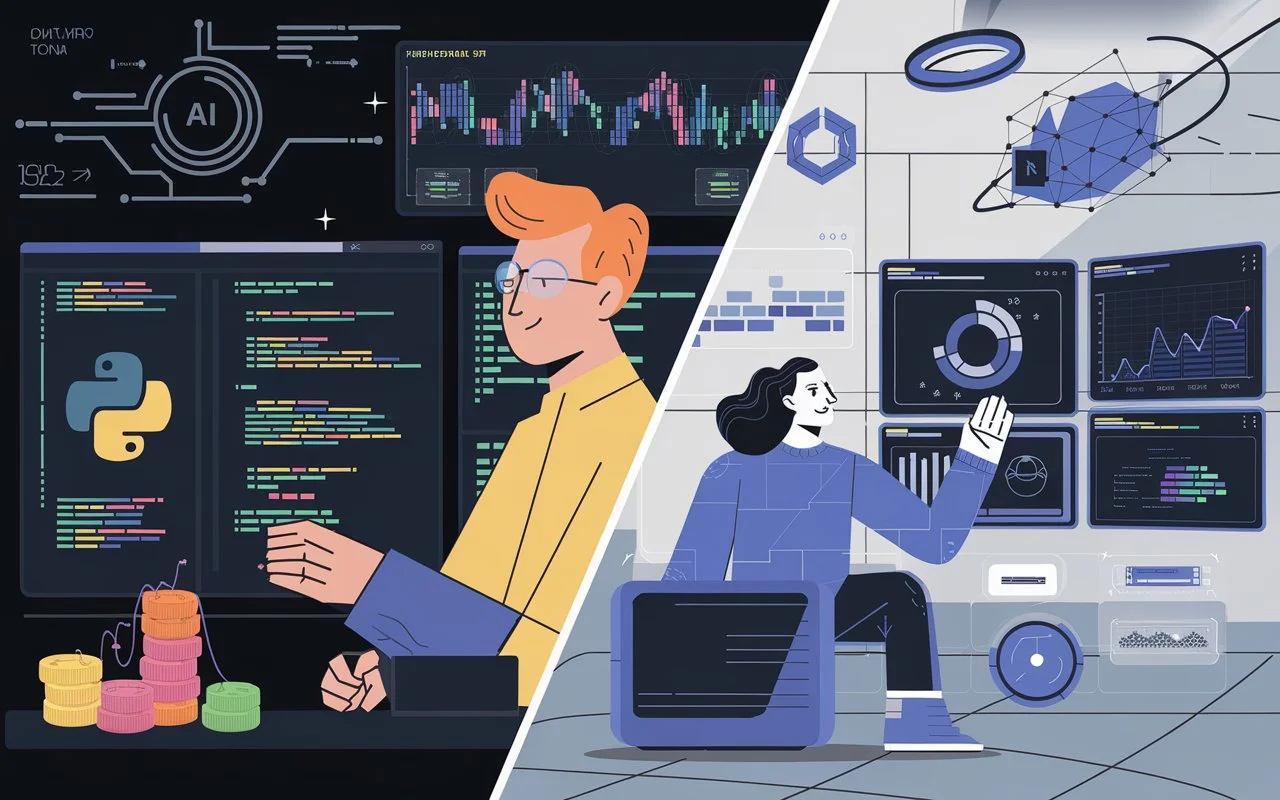
9 Essential Tools Every Data Analyst Should Know
In today’s data-driven world, businesses across industries are heavily reliant on insights drawn from data to make informed decisions. The role of a data analyst has become more crucial than ever, and at the heart of this role lies an arsenal of powerful tools that help analysts extract, clean, analyse, and visualise data. Whether you’re an aspiring data analyst or a seasoned professional looking to sharpen your skills, familiarising yourself with the right tools is non-negotiable.
This blog offers a comprehensive guide to nine essential tools that every data analyst should know. Each tool brings something unique to the table—from organising and querying data to visualising complex insights in a simple, digestible format.

Top 9 Data Analytics Tools Every Aspiring Analyst Must Master in 2025
1. Microsoft Excel – The Analyst’s Foundation
No list of data tools is complete without Microsoft Excel. Despite the advent of more sophisticated platforms, Excel continues to be the bread and butter for many data analysts, especially for quick, ad-hoc analyses and lightweight tasks.
Excel offers features like:
- Pivot tables: for summarising and analysing data interactively
- Charts and graphs: for quick visual representation
- Conditional formatting: for pattern recognition
- Visual Basic for Applications (VBA): to automate repetitive tasks and build custom functions
Its simplicity, widespread adoption, and versatility make it a must-know tool for any analyst, particularly in corporate settings.
2. Tableau – Visualising Data with Impact
Tableau has become synonymous with data visualisation. It enables analysts to create interactive dashboards, maps, and graphs that turn raw data into compelling stories. The platform supports data connections from multiple sources like Excel, SQL databases, and cloud-based services.
What makes Tableau a standout choice?
- Drag-and-drop interface with minimal coding
- Real-time collaboration and sharing
- Deep customisation options for dashboards
- Integration with Python and R for advanced users
Tableau’s ability to translate complex datasets into easy-to-understand visuals makes it an excellent tool for communicating insights to stakeholders.
3. Python – Powerhouse of Data Wrangling
Python has emerged as the go-to programming language for data analysis, thanks to its rich ecosystem of libraries and ease of use. It is especially powerful when dealing with large, complex datasets where tools like Excel fall short.
Popular libraries include:
- Pandas: for data manipulation and analysis
- NumPy: for numerical computing
- Matplotlib and Seaborn: for data visualisation
- Scikit-learn: for machine learning
Python also excels in data wrangling—the process of cleaning, restructuring, and enriching raw data into a desired format. It’s a core skill for analysts who deal with messy or unstructured data from varied sources.
Also Read: How to Become a Data Analyst in 2025
4. R – The Statistical Specialist
R is another open-source programming language, highly revered in academia and among statisticians. While Python is more general-purpose, R is tailored for statistical computing and data visualisation.
Why consider R?
- Powerful packages like
ggplot2,dplyr, andshiny - Extensive support for statistical modelling
- Great visualisation capabilities for exploratory data analysis
- Strong community support, especially in research and bioinformatics
R is ideal when the analysis is heavily statistical or when producing publication-quality plots is a priority.
5. SAS – Advanced Analytics at Scale
SAS (Statistical Analysis System) is a command-driven tool primarily used in large enterprises and heavily regulated industries such as healthcare, banking, and insurance. It is known for its robustness and reliability when handling massive datasets.
Key features include:
- Advanced statistical methods and predictive analytics
- Data visualisation with high-quality outputs
- In-built support for data cleaning and transformation
- Customisable scripting environment
While SAS is a paid tool and has a steeper learning curve, its enterprise-grade capabilities make it a standard in many large organisations.
6. SQL – Speaking the Language of Databases
Structured Query Language, or SQL, is a cornerstone for any data analyst. Nearly all companies store their data in relational databases, and SQL is the language used to query, manipulate, and retrieve that data.
With SQL, you can:
- Join multiple tables
- Filter records based on conditions
- Group data for aggregation
- Create and manage database objects
SQL proficiency is often a non-negotiable requirement in job descriptions for data analysts. Mastering it can significantly speed up your ability to access and process relevant data.
Also Read: Top Big Data Technologies in 2025
7. RapidMiner – Automating Insights with Machine Learning
RapidMiner is an all-in-one data science platform that supports everything from data preparation and modelling to evaluation and deployment. With its user-friendly drag-and-drop interface, even non-programmers can perform complex analyses.
Core features include:
- Data mining and machine learning workflows
- Text analytics and sentiment analysis
- Model validation and performance tracking
- Automation for repetitive data science tasks
It is an excellent tool for those looking to incorporate AI and ML into their analytics without deep programming expertise.
8. Power BI – Business Intelligence Made Simple
Microsoft’s Power BI is a business analytics tool designed to visualise data and share insights across an organisation. While similar to Tableau in functionality, Power BI’s integration with Microsoft Office Suite makes it a favourite among Excel users and business teams.
Power BI features:
- Easy connection to Excel, Azure, SQL Server, and other sources
- Natural language query capability
- Mobile-friendly dashboards
- Real-time data updates and collaboration
Power BI is often chosen for its affordability, ease of use, and seamless integration into existing Microsoft ecosystems.
9. FineReport – Bridging Analysts and Non-Analysts
FineReport is a lesser-known but powerful business intelligence tool that allows both technical and non-technical users to generate reports, build dashboards, and monitor KPIs.
What sets FineReport apart?
- Intuitive user interface
- Advanced data visualisation capabilities
- Real-time report scheduling and distribution
- Compatibility with mobile devices and browsers
Its user-friendliness makes it a great option for organisations looking to empower a broader range of users with data access and reporting capabilities.
Conclusion
As you can see, data analysis is a multi-faceted domain that demands a diverse toolkit. From traditional tools like Excel and SQL to advanced platforms like Python, Tableau, and SAS, each tool plays a specific role in the data pipeline—from raw data to actionable insights.
For aspiring analysts, the best approach is to build a solid foundation in:
- Excel and SQL for basic data manipulation
- Python or R for deeper analysis and automation
- Tableau or Power BI for presenting your findings
As you grow in your career, tools like SAS, RapidMiner, and FineReport can give you the edge in specialised or enterprise environments.
Bonus Tip: Check the Job Descriptions!
If you’re unsure where to start, browse job listings for data analyst roles. Employers often mention the specific tools they expect candidates to know. Aligning your learning with industry expectations can give you a competitive edge.
So, which tools are you currently using in your workplace? Are there any others you’d recommend? Drop your thoughts in the comments!
Also Read: How Ravi Transformed His Career and Became a High-Paying Data Analyst




